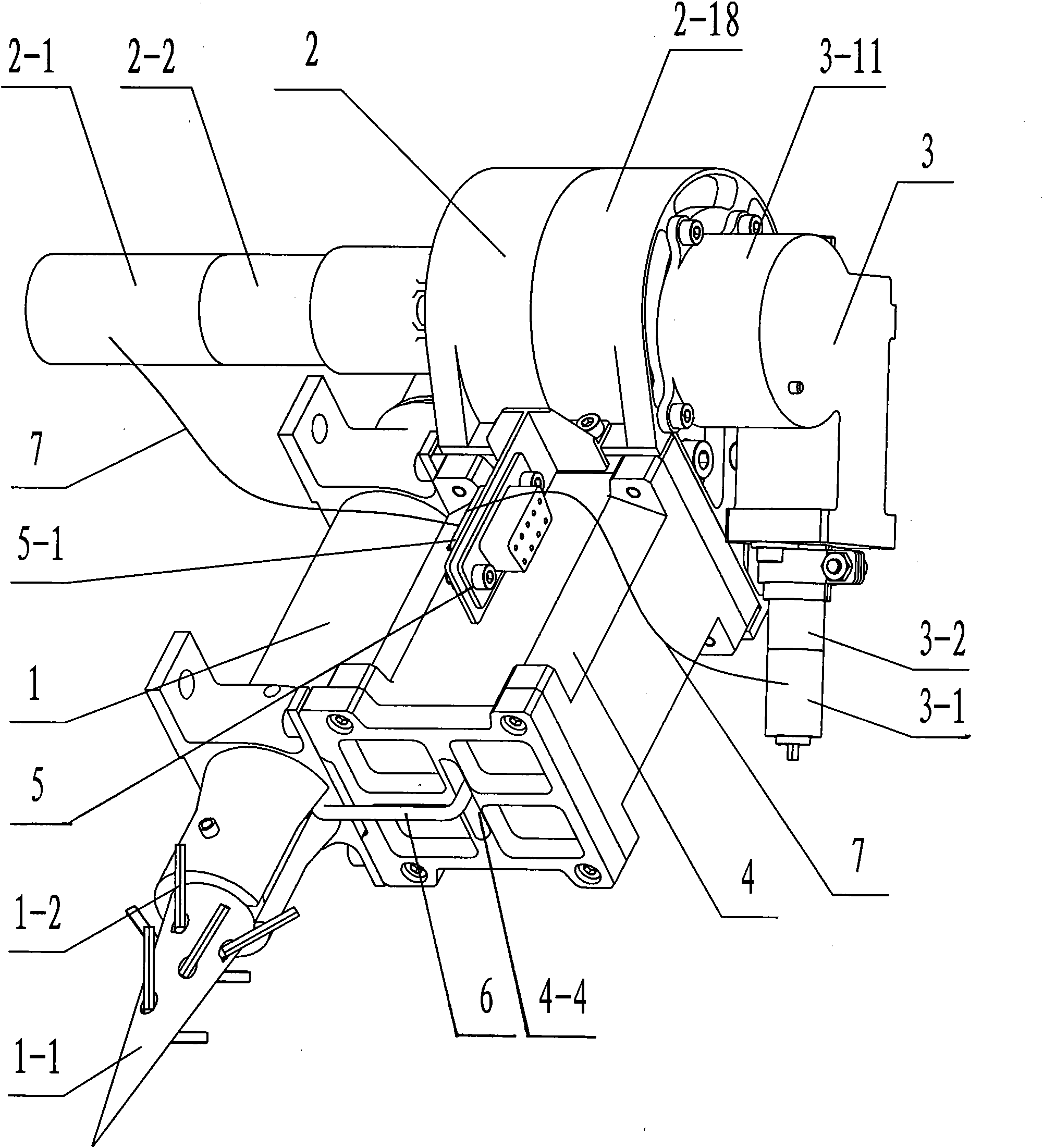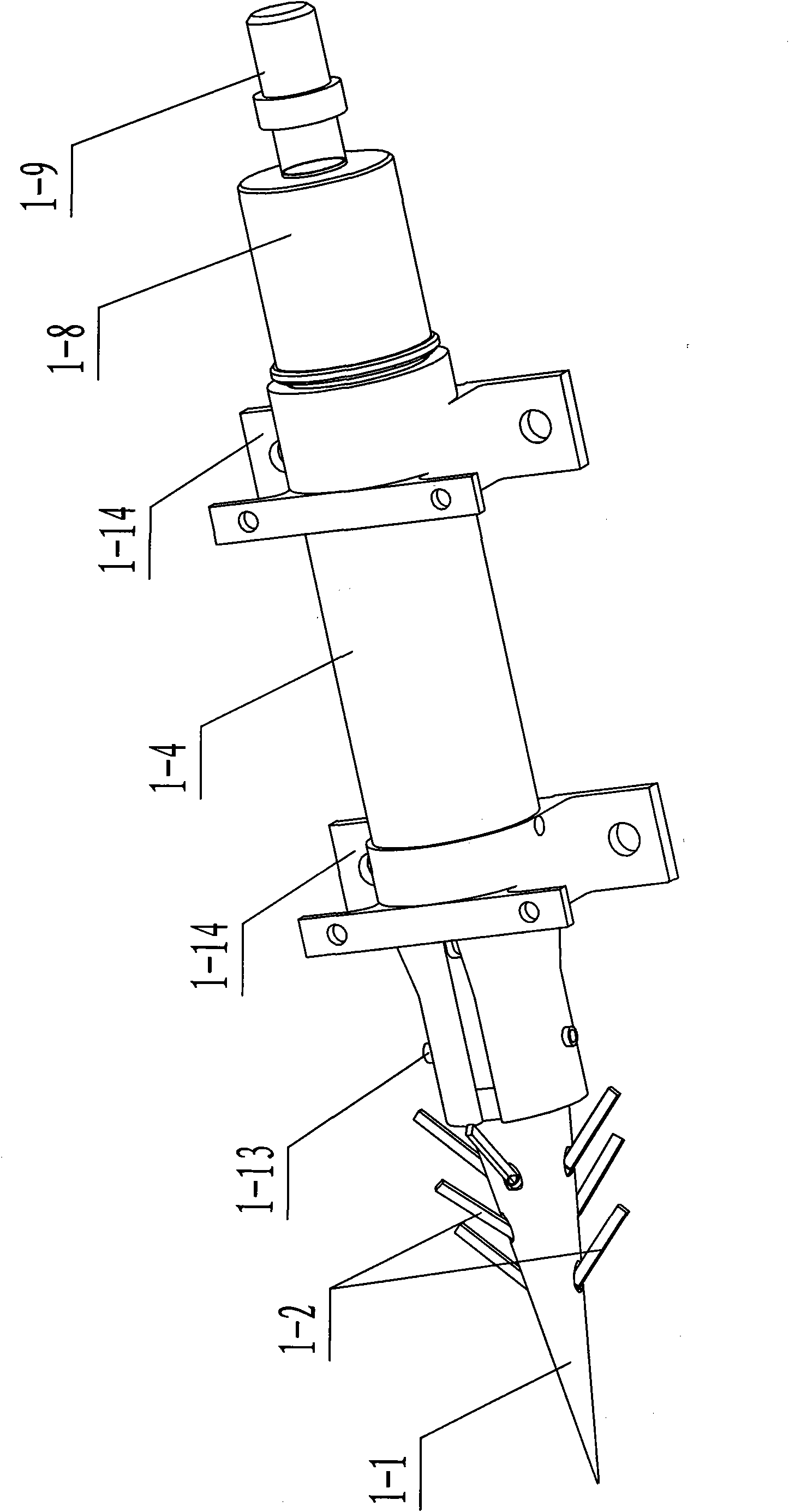Anchor positioning system for detecting planetoid lander
A positioning system and lander technology, applied in the field of deep space exploration and positioning systems, can solve the problems of the quality change of the moving part of the telescopic casing, the difficulty of estimating the initial launch energy, and the damage of the lander instrument, so as to save launch costs, light weight, Eliminates the effect of lateral shock loads
- Summary
- Abstract
- Description
- Claims
- Application Information
AI Technical Summary
Problems solved by technology
Method used
Image
Examples
specific Embodiment approach 1
[0028] Specific implementation mode one: combine Figure 1-Figure 18 Describe this embodiment, the anchor positioning system for asteroid lander detection in this embodiment consists of a propulsion mechanism 1, a winding mechanism 2, a locking and unlocking mechanism 3, a cable box 4, an electrical interface 5, a connecting wire 6 and Composed of two wires 7;
[0029] The propulsion mechanism 1 includes an anchor body, an expansion cylinder 1-4, a piston 1-5, a tear pin 1-6, a piston cap 1-7, a combustion chamber 1-8, an explosive device 1-9, and an anchor pin 1 -11. A signal detection sleeve 1-13 with wires and two link interfaces 1-14; the anchor body is composed of an anchor tip 1-1, a plurality of barbs 1-2 and an anchor rod 1-3, the The plurality of barbs 1-2 are evenly arranged on the outer wall of the anchor tip 1-1, the tail end of the anchor tip 1-1 is fixedly connected to one end of the anchor rod 1-3, and the piston 1-5 is arranged on the anchor rod 1 -3, one end...
specific Embodiment approach 2
[0035] Specific implementation mode two: combination image 3 The present embodiment will be described. The taper β of the anchor tip 1-1 of the present embodiment is 15°. With such a setting, it is convenient to shoot into the surface of the asteroid, and has a better penetration depth. Other compositions and connections are the same as in the first embodiment.
specific Embodiment approach 3
[0036] Specific implementation mode three: combination image 3 To describe this embodiment, the included angle α between the barb 1-2 and the generatrix of the anchor tip 1-1 in this embodiment is 10-20°. With such a setting, it is convenient to inject into the surface of the asteroid, and the adhesion is strong. Other compositions and connections are the same as those in Embodiment 1 or Embodiment 2.
PUM
 Login to View More
Login to View More Abstract
Description
Claims
Application Information
 Login to View More
Login to View More - R&D
- Intellectual Property
- Life Sciences
- Materials
- Tech Scout
- Unparalleled Data Quality
- Higher Quality Content
- 60% Fewer Hallucinations
Browse by: Latest US Patents, China's latest patents, Technical Efficacy Thesaurus, Application Domain, Technology Topic, Popular Technical Reports.
© 2025 PatSnap. All rights reserved.Legal|Privacy policy|Modern Slavery Act Transparency Statement|Sitemap|About US| Contact US: help@patsnap.com



